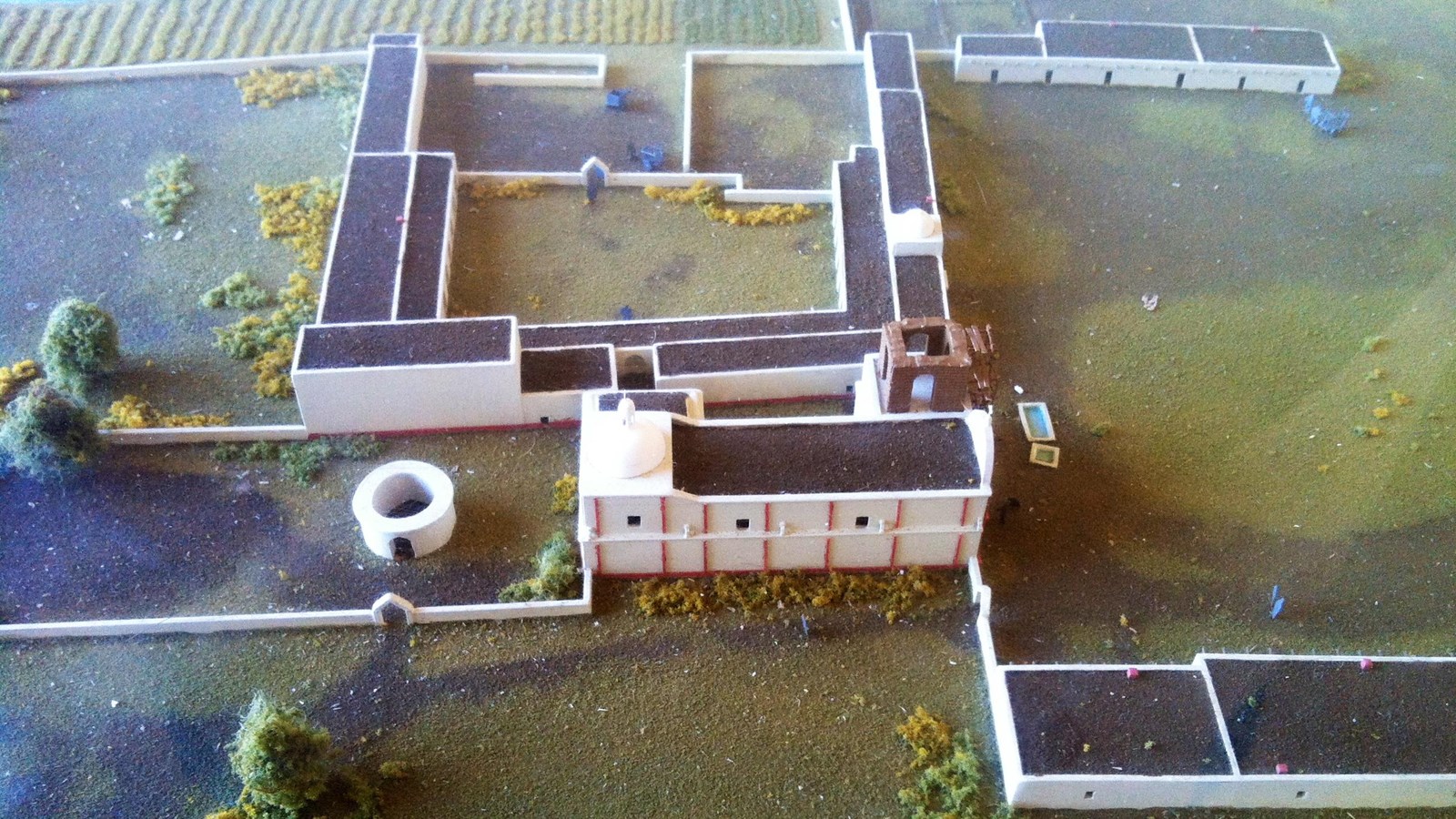Last updated: April 10, 2024
Place
Tumacácori Visitor Center - Mission Model

Carl Greenbaum
Historical/Interpretive Information/Exhibits, Scenic View/Photo Spot, Wheelchair Accessible
The goal of Spanish colonization was simple: to remake New Spain in the image of Old Spain. All aspects of daily life would be subject to transformation – food, language, clothing, agriculture, and religion. In the mission model you can see adobe buildings for residences and workshops, agricultural lands, cattle, and the main irrigation ditch. A mission community could be considered a residential training academy where indigenous people learned and adopted a new way of life. The plan was for the missionary priest to move on after ten years, when the community could sustain itself. In fact, more than 100 years would pass before the turn of the 19th century when the first bricks would be laid for the mission church you see today.
On October 17, 1775, Father Pedro Font held mass at the mission as Juan Bautista de Anza marshalled his forces at Tubac. The mission also contributed a small herd of cattle to the expedition.
Tumacácori went from being an O’odham village to a frontier visita (satellite mission) to a cabecera (headquarters mission). Its people changed as well. The O’odham became known as the “Pima” and the “Papago,” and their lands the Pimería Alta (land of the upper Pima). They were baptized with Spanish names, given Spanish-style clothing, and assigned Spanish jobs. They tended to domestic livestock rather than hunting wild game, and irrigated fruit trees that came from oceans away.
Today, the O’odham people still carry with them the legacy of colonization. Because they did not record their stories in a written language, exploring their history requires empathy, inference, and respect for O’odham oral tradition. The descendants of mission-era communities are still living all around us.
The visitor center is a National Historic Landmark and includes a museum. Visits to Calabasas and Guevavi can be arranged at the park's headquarters. A trail connects Tumacácori and Tubac along the Santa Cruz river through beautiful riparian habitat containing cottonwoods and mesquite. Look for several large ramadas enclosing interpretive panels about Anza's Expeditions and the natural history of the area.
